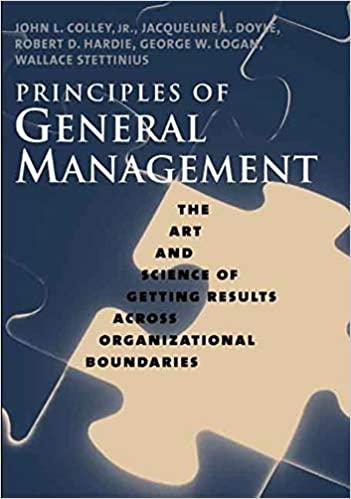Answered step by step
Verified Expert Solution
Question
1 Approved Answer
Modern statistics emerged at the end of the 1 9 th century and was formalized as a methodology for the analysis of data with the
Modern statistics emerged at the end of the th century and was formalized as a methodology for the analysis of data with the publication of Statistical Methods for Research Workers by Ronald Fisher in Fisher described a methodology, previously proposed by Karl Pearson, in which we pose an hypothesis and measure how far the data deviate from the hypothesis. Using probability, if we decide that the discrepancy is too large to be due to chance, then we reject the hypothesis. This is similar to a trial in which the defendant is assumedhypothesized to be innocent. The prosecution then presents evidence data If we cannot reconcile the observed evidence with the hypothesis, then we reject that the defendant is innocent. If we reject innocence, then we conclude guilt.
Where does probability come into the trial? Maybe the evidence just happened by coincidence. If the probability of this happening is very small, then we say that we have proven guilt beyond reasonable doubt In statistics, when we reject an hypothesis, we conclude that the alternative is statistically significant
Over the next decades after Fishers book was published, beyond reasonable doubt or statistically significant came to be standardized as either a or chance that the observed discrepancy happened by chance, when the original hypothesis was true. This is like saying that if a defendant is innocent, there is a or if you want to set a higher standard chance she is found guilty just because the evidence seemed to suggest guilt, but she really wasnt
Pconclude guilty by mistake innocent
This approach was seen as taking the subjectivity out of research and letting the data speak for itself. Although this methodology has been the standard for almost years, it has not been without critics and the criticism has been increasing markedly in the last years. You will study this methodology in practice in MGSC
This methodology is similar to using a classification model with a sensitivity rate of but all other performance measures are unknown.
Let us look at one of the reasons why it is being challenged. Suppose that we are looking at research that is try to determine whether one group is better than another eg AB testing in online marketing We are trying to prove that a new treatment is better than a placebo no treatment We do the research by randomly assigning individuals to the treatment and placebo groups. We work from the hypothesis that the treatment is not better than the placebo the opposite of what we are trying to prove If the data shows convincingly that the treatment is superior to the placebo, we reject our initial hypothesis and conclude that we have proven the treatment is better. There is a chance that we will see improvement just by chance, but this probability is small.
Suppose we require proof beyond reasonable doubt to be a significance level of This means, Pconclude better not effective is or less In many applications we cannot accurately estimate Pconclude better effective unless we actually know how much better the treatment really is Let us suppose that Pconclude better effective is Imagine that there are thousands of researchers doing these experiments, each testing some hypothesis they have proposed. Let us assume that only in of cases is the treatment really effective it is not easy to find good treatments
a Construct a tree diagram that will show all possible outcomes of effective not effective and conclusions better or not better Label each branch with respect to the event associated with the branch and the probability of travelling along the branch.
b Summarize the outcomes in a probability table such as
Treatment not effective Treatment effective Total
Conclude treatment not better
Conclude treatment better
Total
c What is the probability that you will conclude that the treatment is effective?
d Among cases where you conclude the treatment is effective, what proportion really are effective?
Step by Step Solution
There are 3 Steps involved in it
Step: 1

Get Instant Access to Expert-Tailored Solutions
See step-by-step solutions with expert insights and AI powered tools for academic success
Step: 2

Step: 3

Ace Your Homework with AI
Get the answers you need in no time with our AI-driven, step-by-step assistance
Get Started


